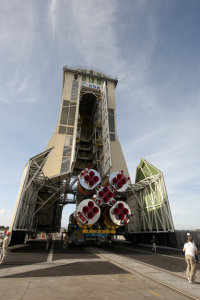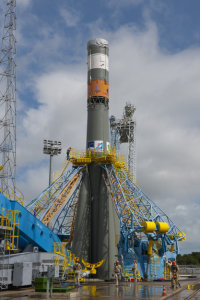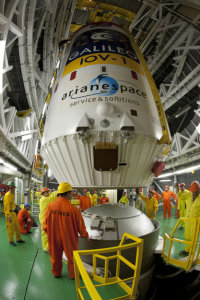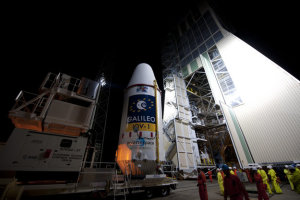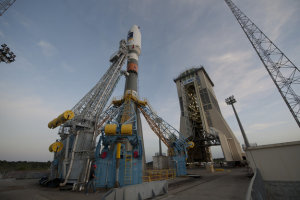Galileo IOV satellites launch on 21 October 2011 was historic: it was the first Soyuz launch from a spaceport outside of Baikonur in Kazakhstan or Plesetsk in Russia. The site was Europe’s Spaceport in Kourou, French Guiana.
French Guiana is much closer to the equator, so each launch was benefit from Earth’s spin, increasing the maximum payload into geostationary transfer orbit from 1.7 tonnes to 3 tonnes.
As a medium-class launcher, Soyuz complements Ariane and Vega to increase the flexibility and competitiveness of Europe’s launcher family.
This is the process. Each three-stage rocket is assembled horizontally in the traditional Russian manner. See next the video of the assembly of the Soyuz VS01:
Then it is horizontally transferred to the pad:
and moved to the vertical so that its payload can be added from above:
Encapsulated Galileo satellites atop Soyuz:
Upper composite transfer to launch zone:
This is the moment when the twin Galileo satellites, safely encapsulated within their Upper Composite, were placed atop their Soyuz ST-B launcher on 14 October 2011.
Galileo IOV satellites attached to their launch dispenser and encapsulated beneath the fairing of their Soyuz ST-B launcher:

